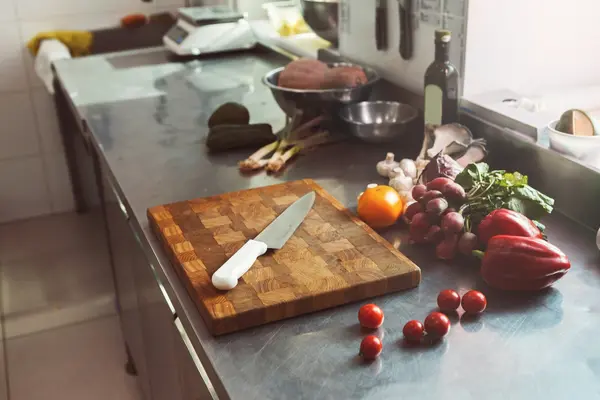Kitchen
Effective Tips for Cleaning Butcher Block Surfaces

Butcher block surfaces are a beautiful addition to any kitchen, offering warmth and functionality. However, they require regular care to maintain their appearance and durability. Follow these tips to keep your butcher block countertops, cutting boards, or tables in excellent condition.
Understanding Butcher Block Surfaces
Before cleaning, it’s important to understand the type of butcher block you have. This will influence how often and how intensely you clean it.
Wood Species:
- Maple, oak, and walnut are common, durable hardwoods for butcher blocks.
- Harder woods (like maple and walnut) are less absorbent and require less frequent oiling.
- Softer woods (such as cherry or beech) require more care and regular oiling.
Finish:
- Oiled surfaces need regular re-oiling to maintain the protective barrier.
- Waxed surfaces need periodic waxing to preserve their appearance.
- Unfinished butcher blocks are more prone to stains and require extra care.
Construction:
- End-grain blocks are more self-healing, reducing knife marks and are more absorbent, requiring more frequent oiling and thorough cleaning.
- Edge-grain blocks are less absorbent and easier to care for.
Essential Tools and Materials for Cleaning Butcher Block
You’ll need the following items to properly clean and maintain your butcher block surfaces:
- Mild dish soap
- White vinegar (for occasional use)
- Kosher salt
- Lemon juice
- Baking soda
- Food-grade mineral oil
- Lint-free cloths
- Paper towels
- Dough scraper or plastic putty knife
- Scouring pad or stiff scrubbing brush
- Fine-grit sandpaper (120–220 grit)
- Razor blade scraper (for stubborn residue)
Natural cleaning supplies are best as they are safe for food preparation areas and won’t damage the wood over time.
Preparing Your Butcher Block for Cleaning
- Remove food debris: Use a dough scraper or plastic putty knife to gently lift off food particles.
- Inspect for stains: Identify any discoloration, cuts, or stains that might need special treatment.
Step-by-Step Butcher Block Cleaning Process
Daily Cleaning Routine
- Wipe the surface with a damp cloth after each use.
- For light cleaning, use mild dish soap mixed with warm water.
- Rinse thoroughly to remove soap residue.
- Dry the surface completely with a clean towel.
Deep Cleaning Techniques
Every few weeks, or depending on use, deep clean with these methods:
- Lemon and Salt Method:
- Sprinkle kosher salt over the surface.
- Cut a lemon in half and scrub the salt into the wood, squeezing gently to release juice.
- Let it sit for a few minutes.
- Scrape off the salt and lemon with a dough scraper.
- Rinse with a damp cloth and dry thoroughly.
Addressing Tough Stains
For stubborn stains:
- Make a baking soda paste with water.
- Apply it to the stain and let it sit for several minutes.
- Gently scrub with a scouring pad or brush.
- Rinse with a damp cloth and dry completely.
Using Deodorizing Agents
To neutralize odors from strong-smelling foods like onions or garlic, use:
- Vinegar Solution: Mix one part white vinegar with three parts water. Wipe down the butcher block and let it sit for 10 minutes.
- Lemon and Salt can also deodorize and freshen up the surface.
Maintaining Your Butcher Block Surface
Oiling Your Butcher Block
Oiling is crucial for protection against moisture:
- Clean and dry the surface thoroughly.
- Apply a thin layer of food-grade mineral oil using a lint-free cloth.
- Let the oil soak in for at least an hour.
- Wipe off any excess oil with a clean cloth.
Frequency of Oiling:
- New butcher blocks should be oiled daily for the first week.
- Afterward, oil the block monthly or when it appears dry.
Dealing with Scratches and Cuts
- For small scratches, sand lightly with fine-grit sandpaper.
- Clean the dust off with a damp cloth, then apply mineral oil to the sanded area.
- For deeper cuts, use wood filler to fill gouges, sand once dry, and oil the area.
Avoiding Common Mistakes
To preserve the integrity of your butcher block, avoid these common mistakes:
- Clean spills immediately to prevent moisture damage.
- Never use harsh chemicals or abrasive cleaners that can damage the finish.
- Don’t place hot pots or pans directly on the surface.
- Avoid cutting raw meat directly on the block to prevent bacterial growth.
- Don’t use vegetable or olive oil, as they can become rancid and damage the wood.
When to Consider Professional Restoration
If your butcher block shows signs of extensive damage, deep stains, or warping, a professional restoration might be necessary. Professionals can refinish the surface by sanding away a thin layer to reveal fresh wood underneath, restoring the butcher block’s beauty.
By following these cleaning and maintenance tips, your butcher block surface will remain functional, beautiful, and durable for many years to come.
For more home improvement insights, explore our latest articles on this website, click here!
